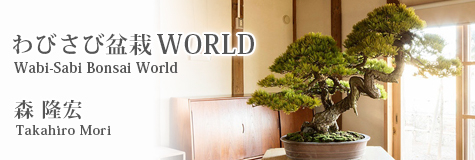
Vol. 7 Please Come and Join Me at a Bonsai Workshop!
Summer is the season for events. It is a time of excitement, a time to free the spirit.
But for bonsai, a summer that is too hot can create an environment which is difficult to bear.
In my work with plants, the climate each year and the state of the plants are recorded as memories in my mind.
I recall that one summer when there was little rain, or the springtime when needles of five-needle pine grew long because of too much rain.
And there were times when the second budding of black pines (which occurs after the first buds are pruned) was slow, or fast.
While they are also cared for by people, bonsai still grow through the beneficence of nature.
One could say that the world of bonsai is completely separated from the society of today that values productivity and speed.
I hope the plants will grow well next year, if this year proves too much of a challenge. I see this as being generous and understanding rather than simply taking it easy.
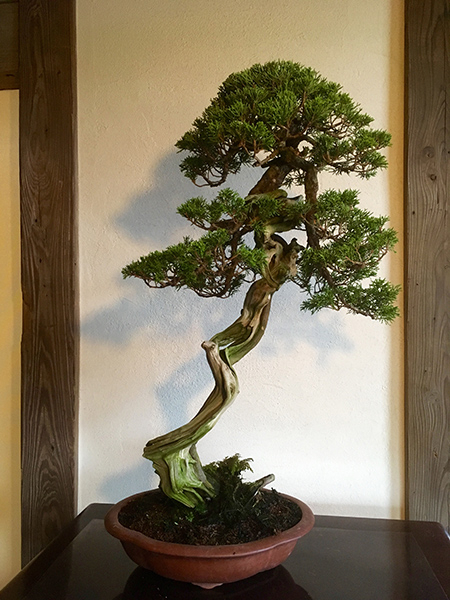
A 120 year old Chinese Juniper (Sabina chinensis). When watering the plants on summer evenings, it is important to pour water on the leaves and needles.
Incidentally, while many people love plants, I believe that women may be the majority among those who enjoy hobbies such as gardening and flower arranging.
The venues at orchid and rose themed events are typically filled with women visitors, and the gardening facility where I take care of bonsai every month, the Kaboku Center, the largest such facility in Ibaraki run by the Tokiwa Gardening and Agriculture Coop, is also filled with women customers.
In comparison, the vast majority of existing bonsai enthusiasts are men.
I am told that there was a brief boom in cultivating Satsuki azaleas from the late 1960s to the early 1970s. Many enthusiasts fell in love with the Satsuki azalea, and a great number of men in their 30s and 40s at the time started Satsuki bonsai.
I have heard the phrase "the Satsuki flowers are so pretty....." spoken by countless people telling me of the past.
These days, I sense fresh air in the bonsai industry as many bonsai workshops are being held throughout Japan at shops and events.
My own workplace, Bonsai Mori, holds workshops twice per day, once in the morning and once in the afternoon, on two days per month, for a total of 4 times per month.
The number of people interested in bonsai is clearly on the rise, with people from a wide range of age groups, from their 20s to 60s, expressing their desire to experience this traditional part of Japanese culture, with which they had previously had no contact. Furthermore, the workshop participants seem to enjoy making the bonsai themselves rather than simply buying them.
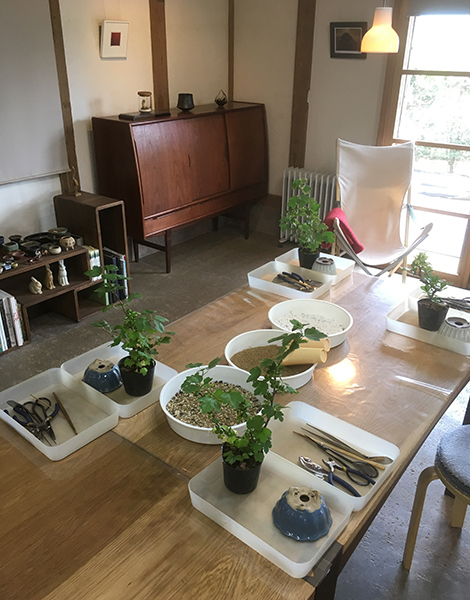
Workshops are held at Bonsai Mori every month featuring tree varieties that are appropriate to the season.
Here I will describe how the workshops are run.
(1) First, a pot for bonsai is prepared.
Bonsai are typically kept outdoors, so we use wire to fix the tree to the pot so it will be steady. This is something people don't normally do when planting something in a planter box, so participants are usually surprised about the wire structure hidden under the soil that is unique to bonsai.
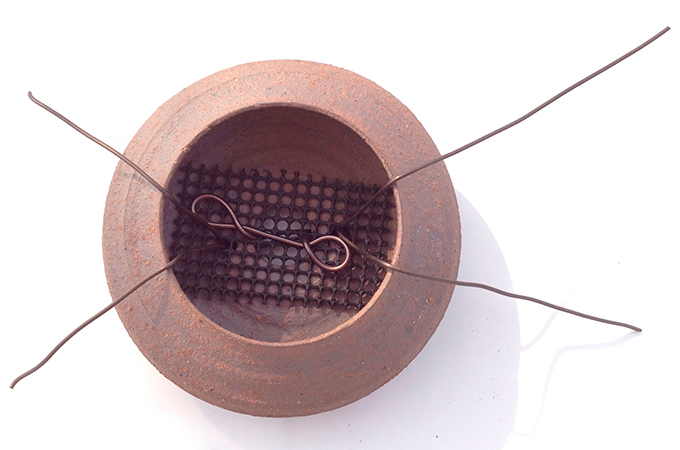
Wire is placed in the pot to fix the tree to it.
(2) The front of the tree is selected to decide the angle to plant it at. Bonsai are always presented facing the front.
To make sure, one has to first identify the front of the tree according to its characteristics and personality, and this is not easy to do. One is not likely to understand the meaning when suddenly told to find the tree's characteristics and personality. However, rest assured I explain this carefully in the workshop.
(3) Excess soil and roots are carefully removed, and the tree is planted in new soil. In this step, I teach participants how to affix the wire to keep the tree and plant stable, and how to appropriately put the right amount of fresh soil deeply into the pot.
(4) Moss covering and watering. In the moss covering process, you can enjoy seeing the moment when the tree truly transforms into a bonsai plant. For watering, I teach in detail the various ways you should water the plants immediately after transplanting and after you take them home.
This completes the workshops, which run for about 90 minutes.
For most people, taking a close look at the leaves, trunks, and roots of plants is something they haven't done for ages, so I think the workshop more than adequately provides enough instruction and enjoyment for your first step.
When there are multiple participants, the results achieved by each are unique despite receiving the same instructions. No two works are the same. Each is original to the person who made it. The individual tree's own personality is further enhanced by the way it grows.
If you continue to practice and create after the workshop, your knowledge and skill will grow as well.
Incidentally, with only one pot, the bonsai plant will grow tired if you carry it in and out of the house regularly to put it on display indoors, so it is better to have about 10 pots and rotate the one you display indoors and balance the management of the bonsai with the rest of your daily life.
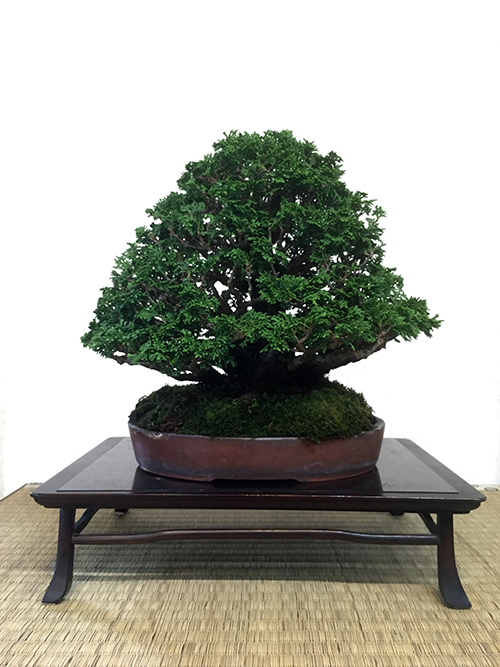
A 25 cm-tall Hinoki grown from a cutting into this form which evokes that of a massive tree. In summer, the strong western sun should be avoided to prevent the needles from drying out.
Bonsai is a hobby that you can continue for your lifetime. In addition to providing simple enjoyment, it also teaches about the changing of the seasons and the providence of nature.
You will experience the joy of coming to see the bonsai as friends and teachers as you cultivate them over the years. And it would bring me joy as well if you become a person who can follow along with patience and relaxation as a bonsai enthusiast.
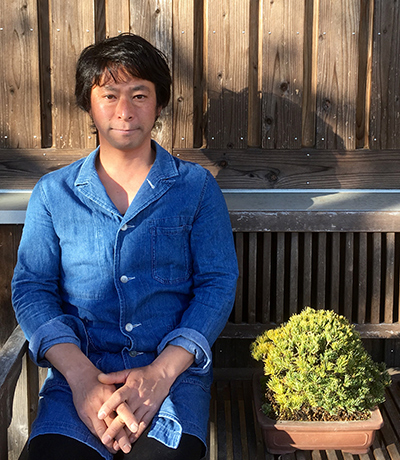 Takahiro Mori
Takahiro Mori
Bonsai master Takahiro Mori was born in Tokyo in 1979. After graduating from the College of Applied International Studies at Tokiwa University, in 2002 he began studying bonsai as an apprentice at Katsuta Koushouen, a bonsai garden in Ibaraki Prefecture. In 2006, he became independent and launched his own activities. In 2009, one of his works won the Kokufu Award at the Kokufu-ten Bonsai Exhibition, an event with a long and distinguished history. From 2009 to 2013, he worked as an in-house bonsai artist at the Omiya Bonsai Art Museum, Saitama. In 2013, he traveled to Kosice in Slovenia, the European Capital of Culture 2013, as a bonsai demonstrator, and participated as a representative of bonsai masters in the presentation for Saitama's bidding to host the 8th World Bonsai Convention, which will be held in 2017. Mori conducted demonstrations at Bonsai Slovakia 2014, and participated as a bonsai expert in the Japan Government exhibit at the EXPO 2016 Antalya International Horticultural Exposition held in Turkey in 2016. Today, in addition to his work as a bonsai master, Mori is actively engaged in initiatives to promote the art of bonsai in Japan and abroad through workshops for beginners that he conducts at his atelier Bonsai Mori established in 2013 and bonsai classes he organizes in California in the United States.
Bonsai Mori websitehttp://bonsaimori.jp/
Bonsai Mori Facebookhttps://www.facebook.com/Bonsaimori/
Related Articles
Keywords
Back Issues
- 2022.7.27 Beyond Disasters - T…
- 2022.6.20 Beyond Disasters - T…
- 2021.6. 7 Contributed Article …
- 2021.4.28 Crossing Borders, En…
- 2021.4.27 Contributed Article …
- 2021.4.20 Contributed Article …
- 2021.3.29 Contributed Article …
- 2020.12.22 Interview with the R…
- 2020.12.21 Interview with the R…
- 2020.11.13 Interview with the R…

